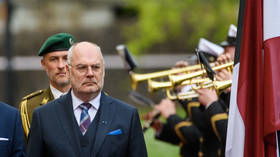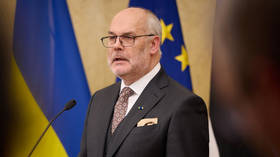EU state approves confiscation of frozen Russian assets

Estonian President Alar Karis has signed into law amendments that allow frozen Russian assets to be used as compensation for Ukraine. The measures, which had been approved by the country’s parliament earlier this month, were given presidential approval on Thursday.
EU countries have been trying for months to find legal means to seize billions in Russian assets immobilized by the bloc, in order to fund Ukraine’s military effort and reconstruction.
The Estonian leadership has adopted a hawkish stance towards Russia ever since the Ukraine conflict began in 2022, regularly referring to the country as “an aggressor” and an “existential threat” to the Baltic states.
New amendments to the existing International Sanctions Act allow for the confiscation of the assets of individuals and companies whose active participation in “military aggression” “has been established and sufficiently proven,” Karis said in a statement. The fact that the funds have been frozen due to EU sanctions is not sufficient for the property to be confiscated, the document states.
To avoid a potential violation of Estonia’s constitution, any decision to seize the assets can only come following a court order, the statement adds.
Estonian officials have said that the funds would be used to compensate Ukraine.
Shortly after the outbreak of the conflict, the EU and G7 froze about €300 billion of foreign currency reserves belonging to Russia’s central bank. About €200 billion is held in the EU, mostly with Belgium-based clearing house Euroclear.
The European Central Bank has warned that any confiscation could carry reputational risks for the euro in the long term and has urged finding other ways to finance Kiev.
The Kremlin has said that any decision to confiscate Russia’s property would violate the rules and norms of international law. The Russian Foreign Ministry has repeatedly called the freezing of Moscow’s assets theft and threatened retaliation.













